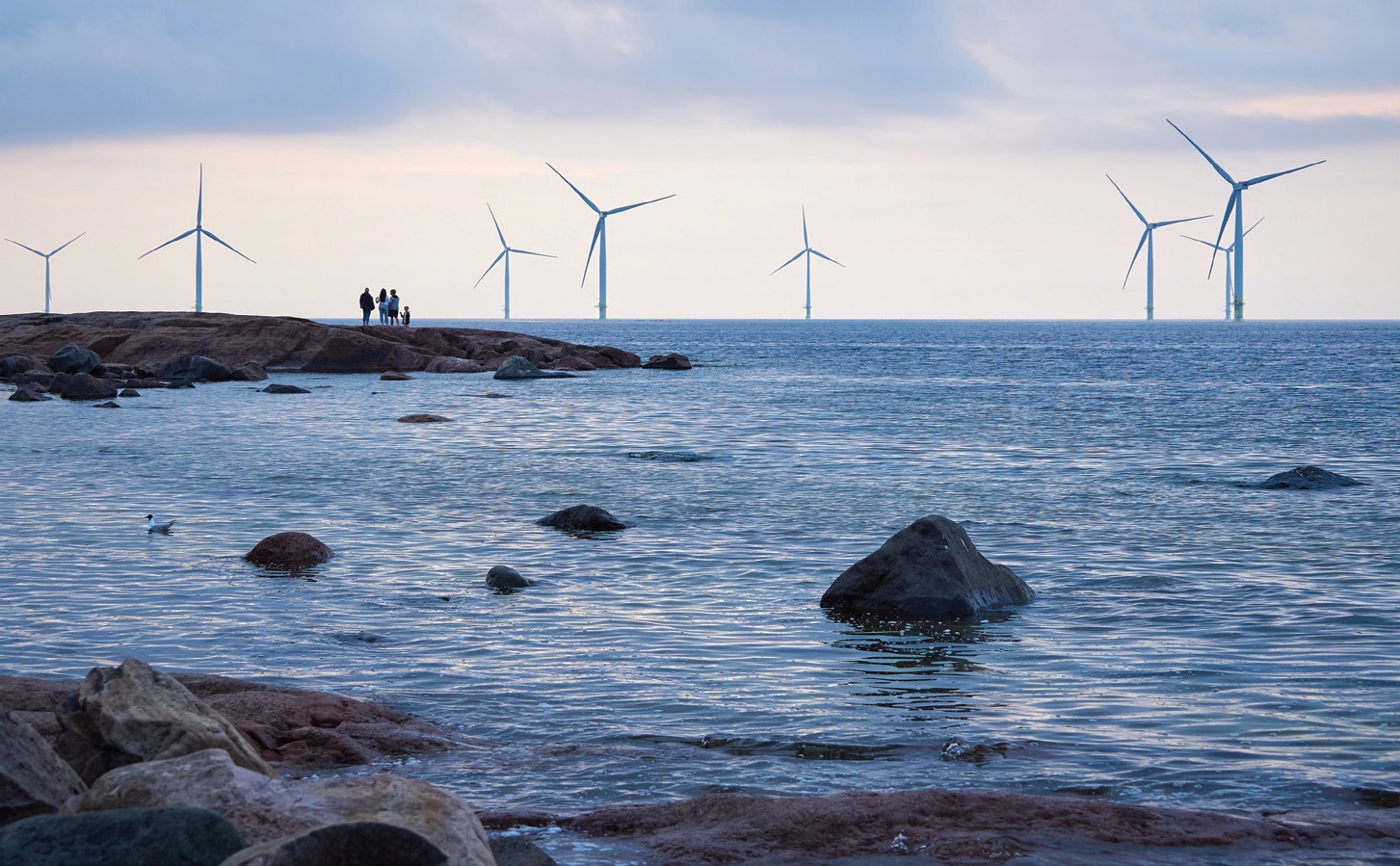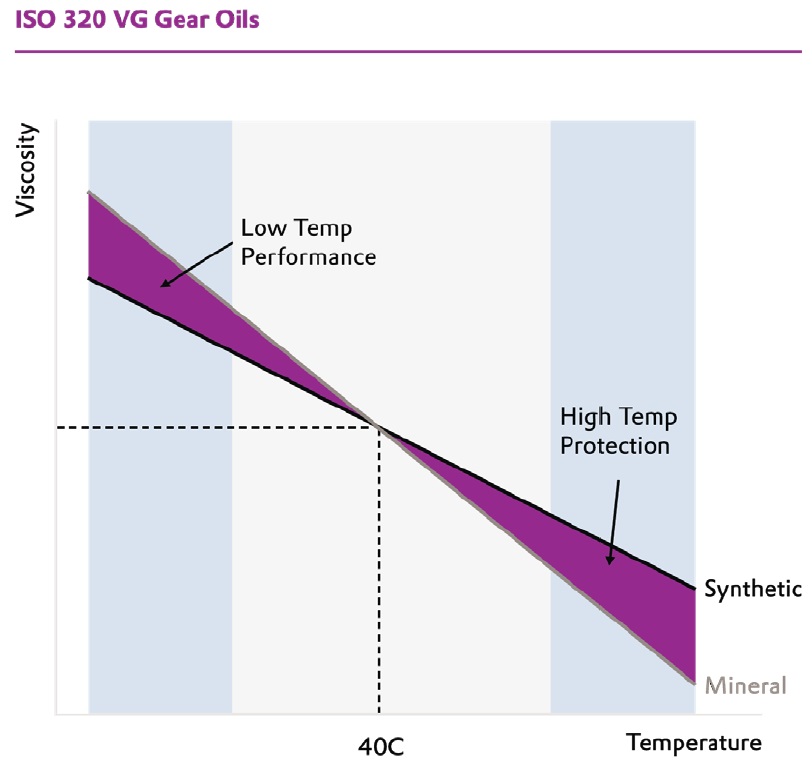Evonik
Cost saving synthetic solutions for the high-tier industrial gear oil market
By David B Gray, NA OEM Manager, Evonik Oil Additives USA, Inc. | TLT CMF Plus November 2019
 © Can Stock Photo / ttretjak
© Can Stock Photo / ttretjak
In response to the changing dynamics of the Industrial Gear Oil (IGO) market, Evonik Oil Additives has developed NUFLUX™ technology; a collection of products, formulation concepts and services. When applied to industrial gear oil formulations it offers the benefits of improved efficiency and reduced operating temperatures at a lower cost versus the traditional synthetic solutions.
Evonik has been able to achieve these benefits by formulating NUFLUX™ industrial gear oils with VISCOBASE® synthetic base fluids. In addition, these formulations have been validated in a range of performance demonstrations across multiple applications. In all cases, improvements in gearbox efficiency and reductions in operating temperatures have been observed, resulting in extended fluid life versus mineral IGOs.
NUFLUX™ IGOs benefit from a combination of synthetic base oils, formulation concepts, OEM approvals, and technical services and are compatible with a comprehensive range of base fluids and additive systems. NUFLUX™ IGOs are applicable to a wide range of lubricant applications including industrial gearboxes and wind turbines.
In this article, we summarize data obtained on NUFLUX™ synthetic IGOs in real world comparisons to existing fluids and discuss the concepts, development, and performance benefits of this exciting new technology.
The Market:
The IGO market is relatively mature with an estimated 1,000,000 MT consumed in 2018 and a projected compounded annual growth rate (CAGR) of 0.1%. However, due to recent changes in fluid requirements and a subsequent drive to synthetic solutions, top-tier products are enjoying significant growth.
The IGO market is split broadly into three classifications: mineral oil-based lubricants that meet basic requirements, enhanced mineral oil-based lubricants meeting specific OEM specifications, and top tier synthetic lubricants with a full slate of approvals and class-leading performance. At the expense of lower-tier mineral-oil based lubricants, demand for synthetic lubricants is increasing rapidly with market share increasing from 8% today to 12% share in 2025.
The growth in synthetic fluids demand is being driven by increasingly severe operating conditions and environment, changes in power density, and social trends focusing on sustainability. Equipment durability to limit downtime remains a critical and over-arching requirement.
Synthetic IGOs offer a wide range of advantages such as superior lubricity, lower volatility, oxidative stability, and extended drain intervals. In this article we will confine ourselves to the differences between mineral oil-based IGOs and synthetic IGOs with respect to low and high temperature performance and the associated changes in the viscosity/temperature relationship.
In
Chart 1, we can see the general relationship between viscosity and temperature in ISO VG 320 Gear Oils. In simple terms the mineral oil-based fluid has a narrow temperature range of operation while the synthetic-based fluid has a broader range of operation. This offers reduced viscosity at colder temperatures and increased viscosity at higher temperatures. These optimized viscometrics ensure the benefits of efficient operation in cold conditions and satisfactory equipment protection at higher temperatures.
 Chart 1. loglog Viscosity vs Temperature
Chart 1. loglog Viscosity vs Temperature
A typical synthetic IGO consists of an additive package, synthetic base oil such as Poly Alpha Olefin (PAO), and a compatibilizer, typically an Ester, to ensure the additive package remains in solution in the synthetic base oil. (
Chart 2)
 Chart 2.
Chart 2.
NUFLUX™ IGOs, utilize VISCOBASE® synthetic base fluids and Group III base oils, replacing the PAO and eliminating the compatibilizer which reduces the cost of the formulation. This is possible as VISCOBASE® base fluids have a well-balanced polarity which results in good additive package solubility and excellent seal compatibility.
NUFLUX™ formulations have been tested extensively in a range of standard bench tests and meet (or exceed) industry standards and key OEM specifications. However, as Evonik has learned from developing other novel technologies, performance in the field under real world conditions is essential to confirm the findings of the laboratory.
Performance demonstrations
The proof of the pudding they say,
is in the eating, so with that in mind, Evonik determined that relatable performance demonstrations were an essential part of conveying the advantages of NUFLUX™ technology. While the theory was proven and bench testing indicated significant advantages over mineral oils, testing in the field is essential and a universally recognized proof of concept.
Evonik learned from earlier development and testing of Efficient Hydraulic Fluids that robust testing protocols are essential. These were developed in conjunction with both OEMs and equipment operators to ensure meaningful data. At each site, the test equipment was instrumented, and the sites were visited on multiple occasions by Evonik's highly skilled operators from the Performance Test Laboratory based in Darmstadt, Germany.
Evonik identified sites for performance demonstrations in Africa, Asia, Europe and the United States. The focus was on wind turbines, mining, and water treatment applications including a controlled trial using a specially designed dynamometer test rig. This trial was conducted with a large gearbox similar to that used in both the mining industry and the water treatment plants. For wind turbine, the primary gearbox was selected while for the mining application, material conveyor gearboxes in a quarry were selected. In the water treatment plant, gearboxes used for agitation proved to be most applicable.
Controlled large scale trial
For the controlled trial, a large 3 stage bevel-spur gearbox (Jake KST II 250B) was installed on a custom test rig equipped with a 400kW motor, and a brake to record output power, a torque meter for input torque and an identical slave gearbox to reduce the very high torque levels. The low reference fluid selected was the OEM recommended VG 320 which was compared directly with NUFLUX™ VG 220, NUFLUX™ VG 320, and NUFLUX™ SYN VG 320. In addition to high reference VG 320 and VG 220 grades and testing was completed over 3 different load stages. The rig was instrumented for oil temperature, input bearing cooling and water temperature. Input and output torque were recorded to determine system efficiency.
NUFLUX™ IGOs were
found to reduce oil sump temperatures between 6°C and 10°C, versus the OEM recommend mineral fluid. Similarly,
input bearing temperatures were reduced by 10°C to 13°C with greater separation at increasing loads. Additionally, NU¬FLUX™ IGOs were proven to be equivalent in terms of efficiency gains to PAO based fluids while all synthetic IGOs were more efficient than the mineral oil IGOs. Further incremental gains could be found if moving to the VG 220 grades if the specific application permits.
Wind Turbine
Evonik has conducted performance demonstrations of NUFLUX™ VG 320 in more than 30 wind turbine gearboxes up to 2MW capacity over 6 years without oil changes or recorded performance or hardware concerns. More than 20 additional gearboxes are currently filled or being filled with NUFLUX™ VG 320, the longest running approaching 36 months with zero concerns. In the earlier demonstrations,
5°C lower temperatures were recorded versus the previous PAO base formulation and in a different gearbox,
residues previously seen on the high-speed bearings and pinions were removed after switching to the NUFLUX™ formulation. General oil analysis showed reduced ferrous particle counts and copper levels less than 2ppm with
no abnormal or excessive wear observed.
Mining
A dolomite quarry located in South Africa that utilizes Hansen RDF 33Q CRN transmission gearboxes for materials conveyors was selected. The gearboxes were filled with NUFLUX™ VG 320 and instrumented to measure relative gearbox efficiency, vibration, and heat profiles. While loads are relatively steady, the environment is especially harsh with high ambient temperatures and abrasive, airborne particulate matter from the mining process. This 6-month demonstration is nearing completion with data indicating
improved efficiency versus the incumbent fluid and reduced vibration in addition to zero incidences of abnormal wear despite the harsh environment.
Water Processing
A water processing plant located in South Africa that uses Hansen P4, 3 stage gearboxes to agitate sewage effluent was selected. The recommended fluid was an ISO VG 220 fluid, so the gearboxes were filled with NUFLUX™ VG 220. The gearboxes were instrumented for oil sump temperature, vibration, and energy consumed versus power delivered to establish relative gearbox efficiency. The loads in the application are very steady and ambient temperatures consistent, which make for accurate comparisons. By comparing the measured energy consumption and power delivery, the efficiency of both the incumbent VG 220 and the NUFLUX™ VG 220 were calculated. Over the 2-month period of the demonstration, the NUFLUX™ fluid measured an
efficiency improvement of 2.9% percent versus the incumbent mineral oil-based fluid. When multiplied by the large number of gearboxes employed in the plant a 2.9% improvement represents a significant energy savings.
Summary
Evonik has developed a new formulation technology for industrial gear oils that has proven to provide increased efficiency and reduced operating temperatures versus mineral based lubricants across a broad range of real-world applications. These IGOs formulated with VISCOBASE® synthetic base fluids offer comparable performance to traditional synthetic solutions at a reduced cost. As such, NUFLUX™ IGOs have the potential to reduce the cost of operations and improve the efficiency across a wide range of Industrial gearboxes.